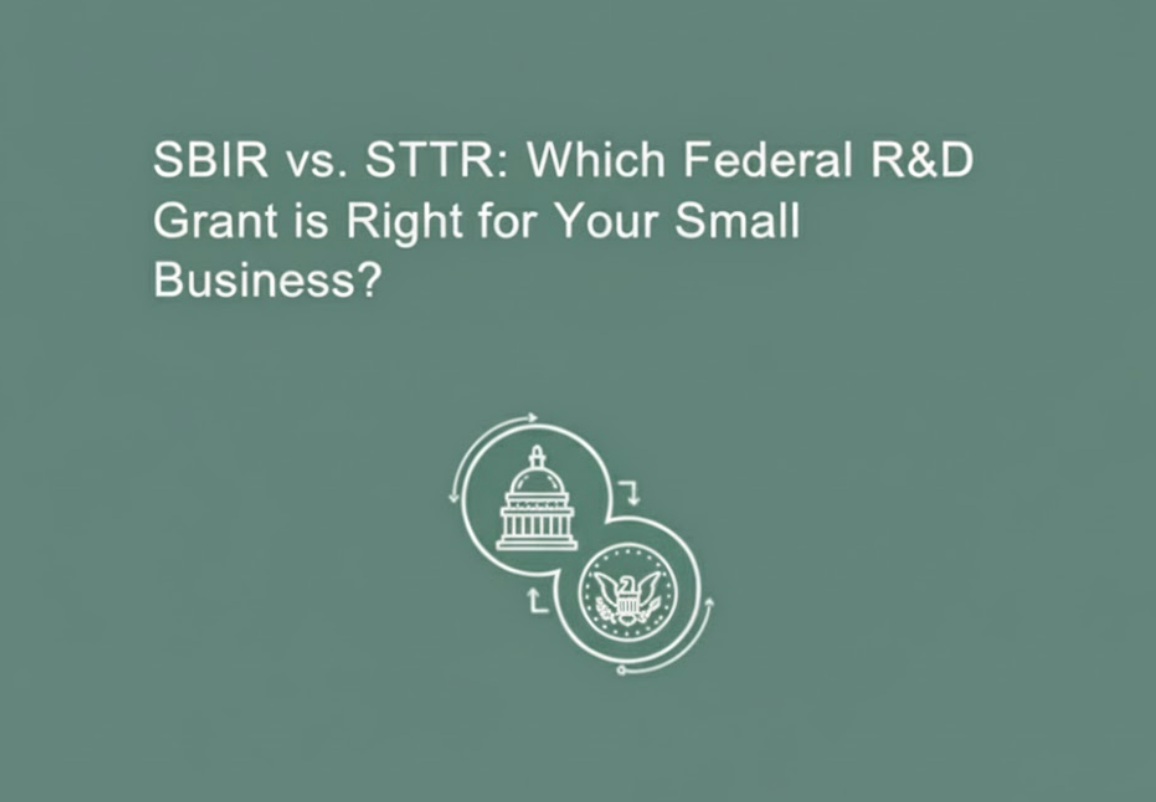SBIR vs. STTR: Which Federal R&D Grant is Right for Your Small Business?

If you’re an entrepreneur with a cutting-edge technological innovation, you’ve likely encountered the Small Business Innovation Research (SBIR) and Small Business Technology Transfer (STTR) programs, often called America’s Seed Fund.
These highly competitive, non-dilutive federal grants are critical for moving high-risk, high-reward research and development (R&D) from the lab to the marketplace. However, understanding the core differences between SBIR and STTR is essential for a successful application. This guide breaks down the nuances of each grant program to help you choose the best path for your small business concern (SBC).
Key Differences: SBIR vs. STTR
While both programs share the common goal of stimulating technological innovation and have the same three-phase structure (Phase I: Feasibility; Phase II: Development; Phase III: Commercialization), they differ primarily in the requirement for collaboration and the distribution of work.
Choosing Your Path: When to Select SBIR or STTR
The decision between an SBIR award and an STTR award should be a strategic one, based on your company's capabilities and existing relationships.
Choose SBIR If:
- Your SBC has the internal facilities and personnel to conduct the majority of the innovative research on its own.
- Your Principal Investigator is committed to being primarily employed by your small business.
- You want to retain maximum control over the R&D work distribution and do not require formal, mandated collaboration with an outside institution.
Choose STTR If:
- Your project critically depends on specialized equipment, unique facilities, or specific expertise available only at a university or a non-profit research organization.
- Your Principal Investigator is a faculty member or researcher who needs to maintain primary employment at the research institution.
- You are an academic spin-out company and your core technology transfer strategy involves a mandatory, formal partnership with the originating research partner. This program helps technology transfer from the academic setting to the private sector.
Crucial Tip: For STTR, a formal Intellectual Property (IP) agreement detailing the allocation of IP rights must be established between the small business and the research institution prior to the award.
The Value of Non-Dilutive Funding
Both SBIR and STTR grants provide a significant advantage for technology startups: non-dilutive funding. This means you receive capital to fuel your technology development without having to give up equity or take on debt. Securing this type of seed funding also provides external validation (technical merit) of your innovation, which is invaluable when pursuing later-stage private-sector commercialization and follow-on investment.
How Gallium Solutions Can Help with Your Proposal
Navigating the application process for these federal contracts can be complex, involving strict eligibility requirements, detailed technical proposals, and agency-specific solicitations. Gallium Solutions specializes in helping small businesses prepare high-quality, compliant SBIR/STTR proposals.
Whether you're targeting the Department of Defense (DoD), the National Institutes of Health (NIH), or the National Science Foundation (NSF), our experts can guide you through the process, from defining your scope of work to ensuring you meet the mandatory work distribution requirements for your chosen program (SBIR or STTR).
Ready to turn your innovative idea into a commercial success?












